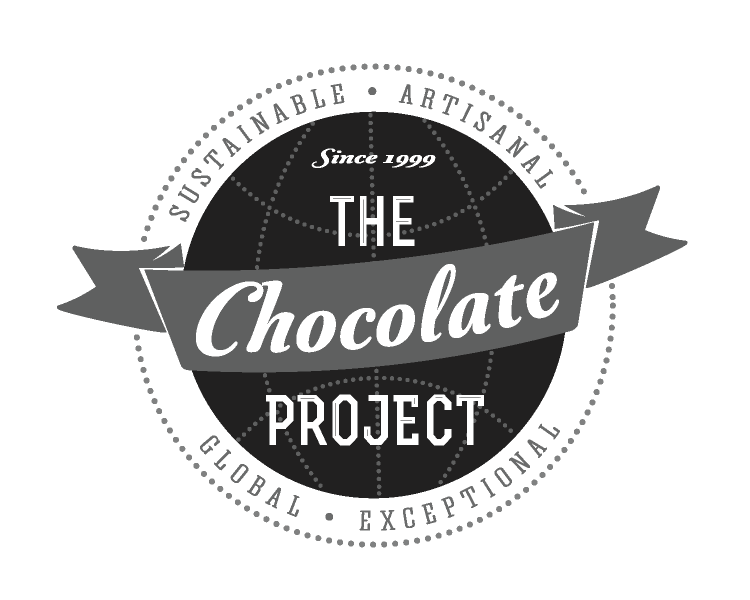While there are many issues in the cacao industry which we could, and likely will, address in this blog, one that rarely comes up in chocolate discussions are the issues of farm and forest management. I'd like to offer a few assorted bits of related info. Perhaps they will have you think of this crop in a way that might change your perspective on cacao.
While we love good chocolate and embrace it passionately, to most of the farmers who grow it cacao is a fruit tree like any other and a particularly problematic one at that. Cacao is prone to many diseases, not to mention tasty to many animals who love to snack on it. The whole process of harvesting, fermenting and drying – which all must be done on site by the farm community – is not widely understood or even embraced by many farmers. Much of the world's cacao harvest is in fact not fermented at all. The pulp is washed off the seeds instead, and they are given a quick roast in a hot skillet before being ground into a rough paste with added sugar, vanilla and other spices. This paste is set into bricks for drying and later use in sauces, stews and drinks. It is about as far from an artisanal chocolate bar as you could get, but in much of Latin America, South East Asia, the Philippines and Indonesia it is how almost everyone experiences cacao. For some peoples in the Americas cacao has deep cultural and religious significance but for most it is simply a part of a meal – no different than corn, beans or rice.
The cacao tree is a shade tree, growing best under a canopy of taller trees in a rain forest setting. It needs a deep mulch of decaying jungle “litter” around it to act as both a fertilizer and as host the swarms of tiny midges who do the bulk of the pollination work. It needs periods of heavy rains, followed by periods of dryness. The tree is shallow rooted so it is not happy in windy spots. Valley sites are too boggy and higher elevations are too cool at night. We're talking a very fussy tree here!
A cacao tree will bear fruit from its third year onward but really hits its productive stride at age 15 to 20 so growing cacao well is a proposition that takes generations to see to fruition. Many cacao farmers are finding that their sons and daughters have no interest in tending the family trees so some tough decisions have to be made. Some farmers are switching from cacao to other more lucrative crops like rubber, palm oil and coffee. Others are selling off the tall hardwood trees on their land for instant cash. Still more are simply abandoning the farm altogether and moving into nearby cities. Craft chocolate makers are more than willing to pay a premium price for high quality beans, a price which would allow cacao to remain a viable industry in many third-world countries, but farmers often lack the skills, the trees, the manpower and the desire to become first rate cacao growers. It is a lot of work and typically takes an entire farming community to buy into the idea. That's assuming they even own their own land...
Much of the world's prime cacao growing land is not owned by farmers, but by governments. These governments have shown that forest preservation and supporting farm communities are pretty much the last thing on their agenda time and time again.
In Brazil the government was recently exposed for covertly easing restrictions on deforestation and penalties for illegal loggers even though the Ministry of Agriculture's own reports showed that over 750,000 hectares of rainforest have been cut down illegally since they started keeping track in 1970 and that the indigenous brazil nut, acai and wild Brazilian cacao trees will all be extinct in less than 10 years.
In the Cote d' Ivoire the ruling evil dictator (although a prince of a guy compared to the last evil dictator) has retained the long held law that itinerant cacao farmers may not use the land in between the trees to grow food crops for their own use. The Cote d' Ivoire is now a net food importer, forced to bring in crops from other parts of Africa and food aid from Europe, even though it has a farm community numbering in the millions and abundant fertile soil. Although this country produces more of the world's cacao than any other, they are among the poorest people on Earth.
In Nicaragua the ruling party granted a Hong Kong billionaire the rights to dredge across hundreds of miles of jungle to link the Atlantic and Pacific in a massive oil tanker-capable mega canal. That his company had little experience with large engineering projects or that the rain forest to be eliminated was home to indigenous peoples and uncounted species of animals, trees and insects was of little concern. That the route passed through Lake Nicaragua, source of most of the country's drinking water, seemed not to be an issue either. They liked the idea so much they gave him a 100 year lease on the entire chunk of land.
So next time you enjoy a fine chocolate bar think not of the person who ground those beans into smooth deliciousness, or the graphic designer who created the pretty wrapping. Consider the farmer who lives thousands of miles away from you and struggles to feed their family. Who walks every day out into the jungle, looks at their trees and wonders if it is all really worth it...
